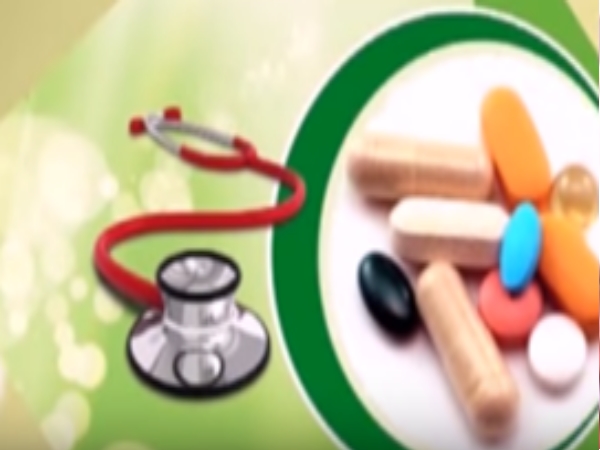Uganda lies in the Tropical region of the world. Epidemiologists and Researchers found Tropics to have many and similar bacteria; these are the lead causes of many infections we suffer from. Mid last month, the National Drug Authority published a list of drug outlets operating without proper licensing countrywide.
Part of the reasons the authority raised was the danger and hazards of accessing healthcare in sub-standard facilities. If you choose to ignore asking questions on the quality of doctors, nurses and paramedics you find in a health facility you will be on the risk of contracting more illnesses, getting wrongly diagnosed, wrong treatment and on the extreme, death may occur in quack health facilities. Amidst the growing number of bacteria, wrong diagnosis and treatment result into antimicrobial resistance. The World Health Organization listed pneumonia, tuberculosis, blood poisoning and gonorrhea as infections that were becoming harder to treat as the antibiotics used to treat them were becoming less effective. But why is this happening? “The bacs themselves they are becoming more complicated if a bacterial wants to survive obviously survival is for the fittest and so it will find ways and means of producing enzymes that go beyond the anti-bacterial viral activity.” Said, Dr. Sabrina Kitaka.
Dr. Kitaka, a Pediatric Infectious Diseases Specialist at Mulago Hospital said the number of children presenting these infections was on the rise. “We typically see infections like malaria but also things like meningitis and pneumonia are neonatal septicemia and am telling you that the biggest burden of bacterial septicemia is mostly in children.” Antibacterial resistance can affect anyone of any age and it occurs naturally but misuse of antibiotics in humans and animals was accelerating the process. “People have given antibiotics to chickens and to other livestock and then the antibiotics are limited in the livestock. So they are causing further and further resistance.” Antibiotics are classified under class B, this means they are only supposed to be sold on prescription but this is the opposite here. “And I think the problem is with all of us; the clinician who prescribes, the community that goes and picks antibiotics from pharmacies and they don’t complete the dose.” Other factors like weak laws have enabled medical professionals and drug shops to sell antibiotics to people who do not need them or in less quantities. Poverty is also another huge factor in this; “Give me two capsules because that is what I can afford and that’s really dangerous because you are just simply massaging the bacteria and not killing it.”
Results from a study carried out by Epicenter at Mbarara Hospital on antimicrobial resistance in children showed that a big number of children were resistant to some drugs but the doctors had not established this. “So, we can’t continue using only ampicillin to treat pneumonia. So even if the medical doctors were aware of the situation that there are some meeting drug resistance or antibacterial not circulating, they were not aware of overall circulation.” Said, Celine Langendof, Epidemiologist, Epicenter France. The National Drug Authority is in charge of monitoring the performance of the drugs on the market, the secretary to the authority Donna Kusemererwa said the authority was aware of the illegal sale of drugs. “The problem of over the counter sale of medicine is one that we are very concerned about it is quite complex. Right now, there’s a mix up roles; clinics are dispensing, pharmacies are prescribing and so it requires the leadership of the Ministry of Health, we as the regulators of the products and medicines and the regulators of the professionals to come together and agree that we must restore things the way they ought to be.” She however said, there is an exception for the amoxicillin which is distributed as per Ministry of Health regulation. “The Ministry of Health has authorized Village Health Teams and Village Health Workers to dispense, to deal with pneumonia in children.” We also asked her if there were any new antibiotics on the market or those that had been taken off. “Well, antibiotics become let's say useful for a particular infection, they may retain the usefulness for another infection so it is not often that we completely remove antibiotics from the market because most antibiotics treat a range of infections. So if it is amoxicillin, we may have ten manufacturers who entered our market then maybe every year another one or two will enter the market with still amoxicillin but from a different source. But we have not had novel antibiotics being registered presently.”
Dr. Kitaka said medics had an important role to play in averting the misuse of antibiotics. “Doctors shouldn’t treat viruses with antibiotics, doctors shouldn’t be treating fungal infections for instance with antibiotics, they shouldn’t be treating common colds with antibiotics and it is important to follow the sensitivity pattern if you don’t then the patient will not recover. The cost of developing one antibiotic costs around 3 billion US dollars from the development in the lab and then using the antibiotic in animal models and then by the time it reaches the population which we call phase for trials, it is so expensive. I think in the last 50 years, one or two antibiotics have been formed because it is so expensive and so if you run out of options; what is going to happen?” A strategic plan was reached by the World Health Organization during the World Health Assembly in 2015 to ensure prevention and treatment of infectious diseases with safe and effective medicines. Its objectives are; to improve awareness and understanding antimicrobial resistance, to strengthen surveillance and research, to reduce the incidence of the infection, to optimize the use of antimicrobial medicines and to ensure sustainable investment in countering antimicrobial resistance.

